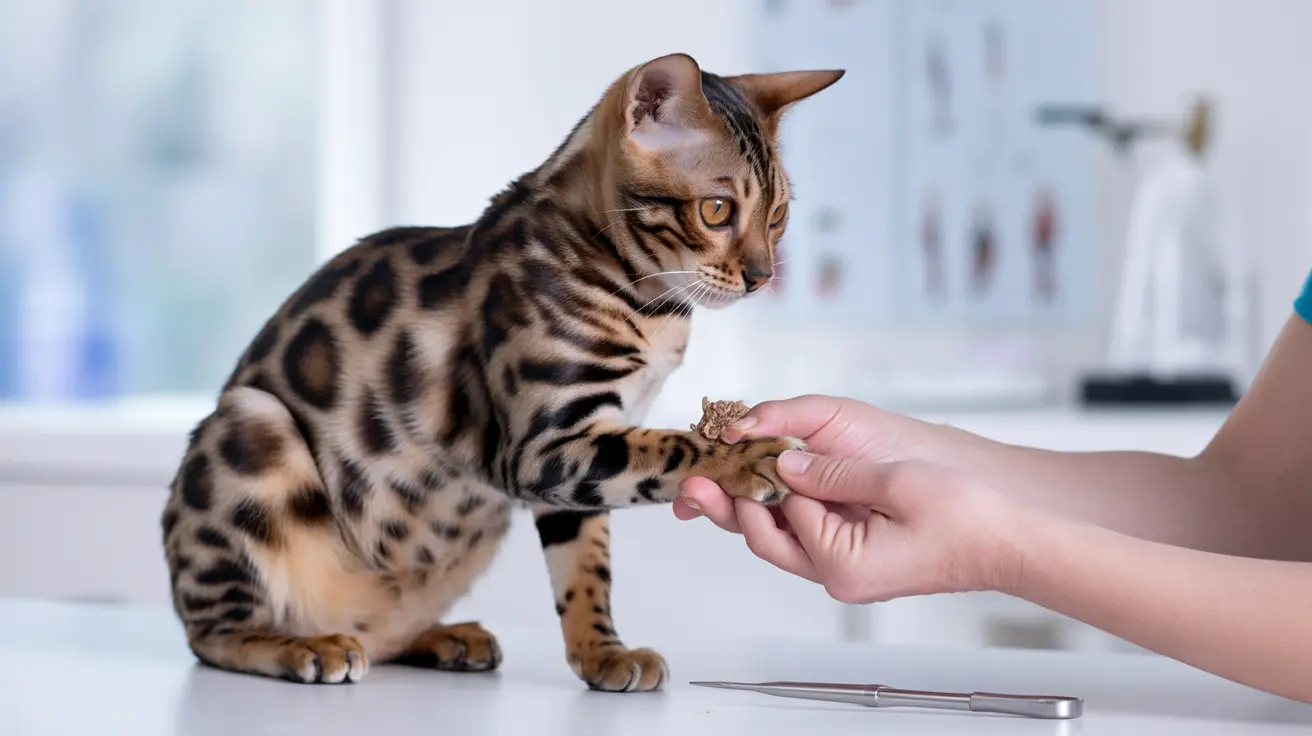What Are Cutaneous Horns in Cats?
Cutaneous horns in cats are unusual growths that develop when there's an overproduction of keratin, the same protein found in your cat's claws and fur. These horn-like projections most commonly appear on cats' paw pads, though they can develop elsewhere on the body. While they might look alarming at first, these growths are often benign and manageable with proper care.
Common Causes and Risk Factors
Several factors can contribute to the development of cutaneous horns in cats:
- Excessive keratin production (hyperkeratosis)
- Physical trauma or repeated friction on paw pads
- Viral infections, particularly Feline Leukemia Virus (FeLV)
- Underlying skin conditions or tumors
- Possible genetic predisposition
Identifying Cutaneous Horns
These growths typically appear as firm, pointed projections extending from the skin surface. They may be:
- Single or multiple growths
- Straight or slightly curved
- Various sizes, from tiny to several millimeters long
- Most commonly found on paw pads
- Sometimes present on the nose, eyelids, or other body areas
When to Seek Veterinary Care
While many cutaneous horns are harmless, certain signs warrant immediate veterinary attention:
- Pain or limping
- Bleeding or inflammation around the growth
- Rapid growth or changes in appearance
- Multiple horns appearing suddenly
- Signs of infection or discomfort
Treatment Options and Management
Treatment approaches vary depending on the size, location, and underlying cause of the cutaneous horn:
- Regular trimming of small, benign horns
- Surgical removal for larger or problematic growths
- Testing and treatment for underlying conditions like FeLV
- Monitoring and maintenance to prevent complications
Prevention and Long-term Care
While you can't always prevent cutaneous horns, you can take steps to manage them effectively:
- Regular paw pad inspections
- Prompt veterinary care when new growths appear
- Maintaining good overall health
- Following recommended treatment plans
Frequently Asked Questions
What causes cutaneous horns (horned paws) to form on cats' paw pads?
Cutaneous horns form due to excessive keratin production, which can be triggered by trauma, viral infections like FeLV, or underlying skin conditions. Sometimes, genetic factors may play a role in their development.
How can I safely trim or manage my cat's cutaneous horns at home?
Small, benign horns can be carefully trimmed with sterile scissors or clippers, similar to nail trimming. However, always consult your veterinarian first to ensure home management is appropriate for your cat's specific case.
When should I take my cat with horned paws to the vet for evaluation?
Seek veterinary care if you notice pain, limping, bleeding, rapid growth, or multiple new horns. Also visit the vet if the growths interfere with your cat's normal activities or show signs of infection.
Are cutaneous horns on cats' paws a sign of serious illness like cancer or FeLV?
While many cutaneous horns are benign, they can sometimes indicate underlying conditions like FeLV or skin cancer. This is why professional evaluation is important, especially for unusual or concerning growths.
What treatment options are available for cats with painful or growing cutaneous horns?
Treatment options include regular trimming, surgical removal, cryotherapy, or addressing underlying conditions. Your veterinarian will recommend the most appropriate treatment based on the specific case and any associated health issues.
Conclusion
While cutaneous horns in cats can be concerning to observe, understanding their nature and knowing when to seek veterinary care is crucial. Most cases are manageable with appropriate care and monitoring, but early intervention is key to ensuring your cat's comfort and health.






